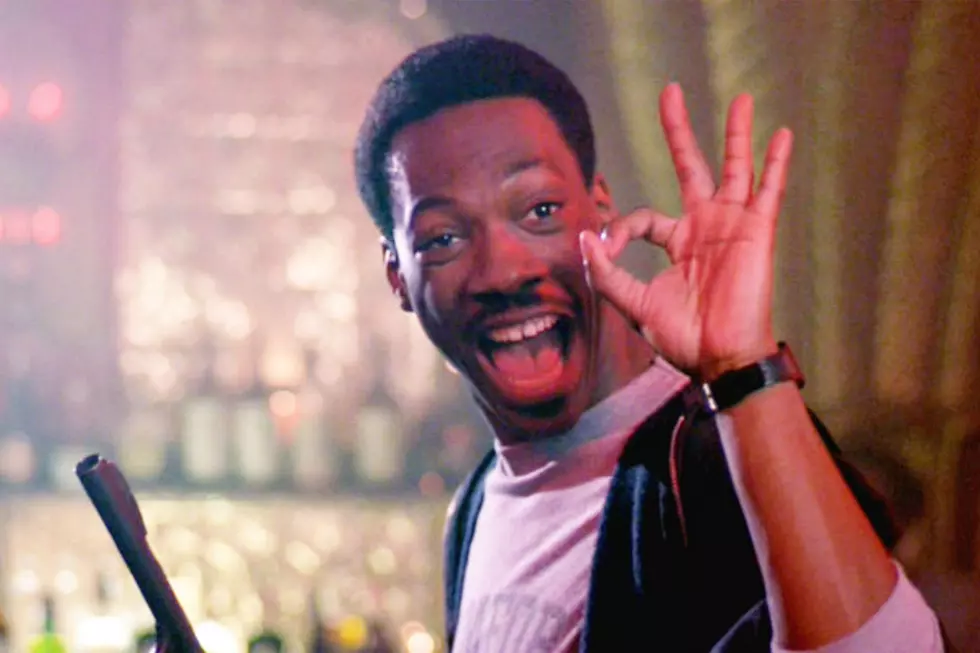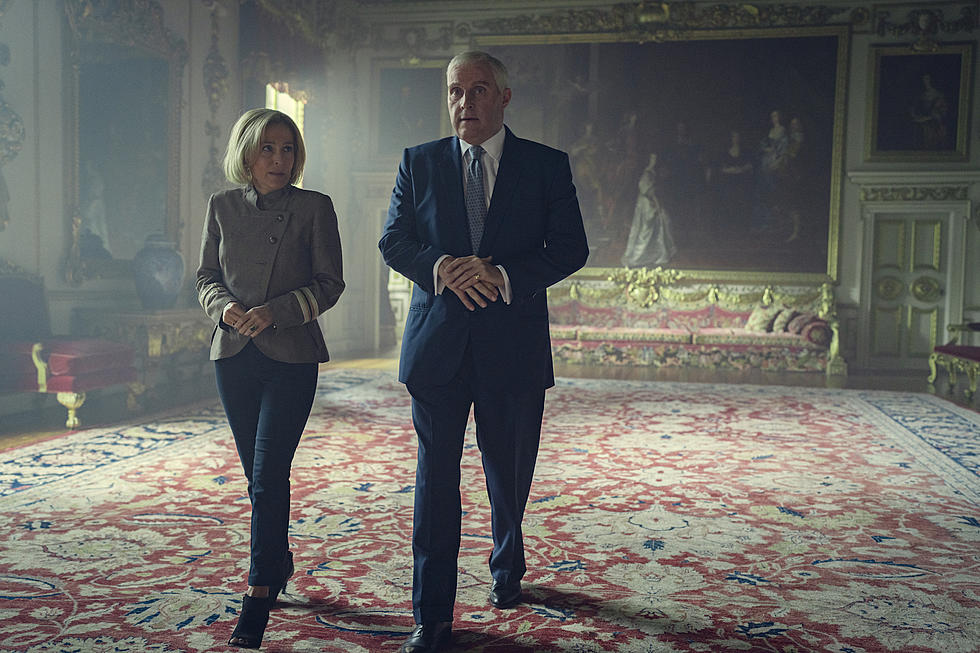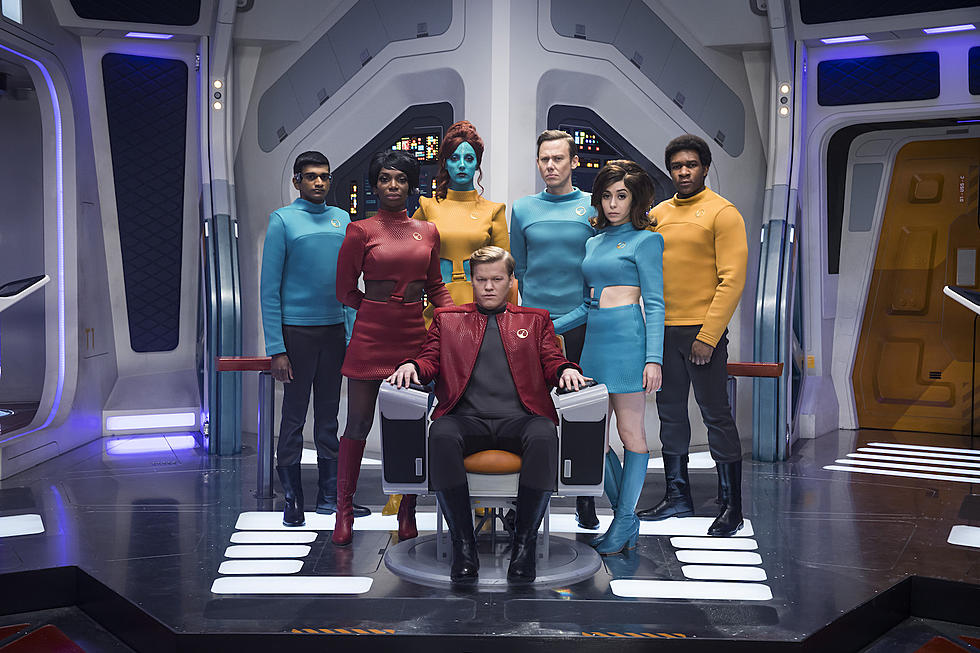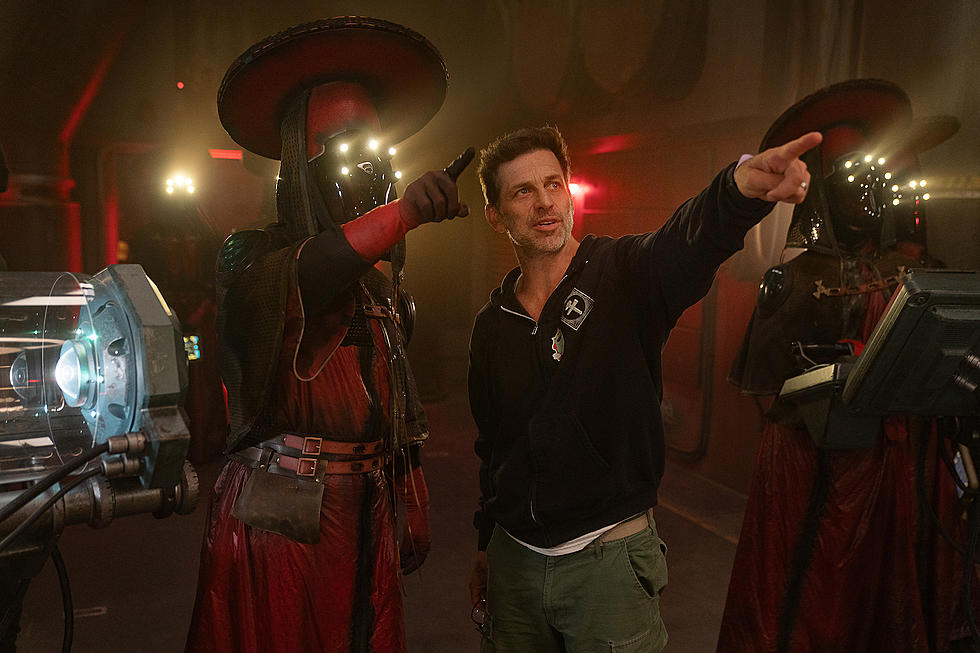
Adam Wingard Wants Two ‘Death Note’ Sequels, Says ‘I Saw the Devil’ Remake Is ‘Up in the Air’
You’ll certainly find gruesome violence in Netflix’s Death Note adaptation, but director Adam Wingard doesn’t view his film as a horror movie. For the You’re Next and Blair Witch filmmaker, Death Note is more of a genre mashup: part thriller, part comedy, and part teen romance, with a dash of horror.
In the latest live-action adaptation of Tsugumi Ohba and artist Takeshi Obata’s 2006 manga series (there were several live-action Japanese versions), Nat Wolff plays Light Turner, an outcast at his Seattle high school. When a mysterious notebook falls into his hands, courtesy of Willem Dafoe’s death god Ryuk, Light discovers he has the ability to kill anyone he chooses, as long as he knows their name and face. First he goes on a revenge rampage, then uses the Death Note to cleanse the world of evil before things get out of control.
I caught up with Wingard last week to chat about how his adaptation differs from the source material. Wingard addressed the movie’s whitewashing controversy, how he originally pitched the film as a trilogy to Netflix, and what he’d want to explore with the sequels. He also gave me an update on his I Saw the Devil remake with Simon Barrett, which is currently “up in the air” now that his Godzilla vs. Kong crossover is on the way.
This is less of a straight horror movie and more of a supernatural thriller. Did you approach this project any differently than your previous horror films?
Yeah, absolutely. I would only say that the movie is a horror film in the sense of whenever Ryuk shows up, and that was always more taking kind of a horror sensibility to his scenes. I was never trying to make it overtly scary or anything. But it was more the sensibility of that, the lighting and the mood of those sequences. Because ultimately I saw the film as being more of an ultimate genre mash up. I mean, if I had to summarize it, I would call it more of a thriller, but it’s got action, comedy, suspense; it’s a crime thriller, it’s a teenage romance. It’s even got a musical moment in it. And that’s what really drew me to the project in the first place was that this was kind of an opportunity to do so many different things in one cohesive whole.
Was the script written as a genre mashup, or did you bring that to this project?
I think I pushed it more into that direction. The original draft that I read, it was actually quite a bit different. The first half was in high school and the second half kind of jumped forward in time and Light was in college. I was like, to go to college is like a whole other thing and you have to address that. That’s like a whole movie almost. So I felt like, let’s use the high school back drop as a place for this and really explore that more.
Ultimately, I always wanted to do a big prom sequence. Even if you watch one of my previous films, The Guest, there’s sort of a warm-up to that in there — the empty Halloween dance at the end. Now we had the money to actually occupy our dance. [Laughs] So it was a real fun opportunity to do stuff like that. And just giving it that Heathers context, it felt like it gave it more relevance, or not even relevance, almost more of a context to be able to understand the characters and what they are going through.
Was Heathers a big inspiration for this?
Yeah, that was definitely one just because it’s one of the few R-rated high school movies that I can think of. There’s lots of different ones, but that was one that I remember thinking about quite a bit. Even though we are doing something very different, it was a movie made for adults and kids, but it’s still about high school and both can kind of enjoy them in their own ways.
How did you approach melding those two — mature topics of death and violence and a high school setting — into a movie for multiple audiences?
I mean it’s having fun with it really. Being able to take the tropes like the bully and using that as the jumping off point for the Death Note. There is just something fun about putting this ultimate responsibility in the hands of a high school kid. And in many ways if you think about it, that’s almost like a metaphor for the way the military works. Because nowadays things are moving more into this sort of less personalized kind of warring, in the sense that to some degree I almost saw the Death Note for being a metaphor for a drone operator or something like that. Where you’re actively blowing things up and killing people and stuff, but you’re not actually there in person to experience it.
So in some ways the first half of the film, all of the violence is very explosive and kind of over the top and almost operatic. I wanted that to be an expression of Light’s POV. The Death Note itself is kind of fun and games for him at first, it’s very exciting. But as the consequences become more real, the movie strays away from that kind of stuff and the reality of it sets in. So it’s just playing with all these things. There’s so many different ways to look at the movie. That’s what I really like about it. It’s a relevant film without being on the nose about it.
Do you view your version of Light as an antihero or more of a superhero?
I think that Light has the best of intentions, but then he gets caught up in it. Ultimately he’s very different than the original, the manga version of Light. And that was a conscious thing. What we wanted to do was almost take the character of Light and split it in two. In this case, Light becomes part Light and then part Mia. And it’s really their coupling is what gives birth to Kira, gives birth to the phenomenon of the Death Note.
In a lot of ways [Mia] is more like the original Light than he is. But it’s really their combination that creates it and pushes him into all these different directions. Because if this is an origin story, I wanted somewhere to go with it. When I brought it to Netflix, I initially pitched it as potentially two or three films. The idea is that we’re seeing Light’s fall from grace, so this would be the first chapter of that and being able to see how everything begins with this sort of altruism that slowly gets more complicated as you get into using the Death Note.
Do you think there will be two more films after this?
Well I hope so. I know that Netflix is really keen on doing it. I do have my next film, which is Godzilla vs. Kong, which is going to be at least two and a half years of my life doing that. I know what I’m going to be doing for two and a half years, but I would love to, if anything, be involved. Because I know exactly where to go with the story, whether I can direct it or not. I definitely would like to direct it, because we’ve set up these characters in such a fun way that now it’s time to really play with them and see where they go. I’d love to watch Light’s downward spiral, and L becoming more and more human as he goes, as he’s getting away from his programming a bit more.
And it doesn’t end the same way as the manga, so there’s a lot of play with there.
No, and that’s the thing. Because ultimately it’s less of a direct adaptation because there’s so many different things about it. Just given the fact that it takes place in a different country and that the plot points are much looser. There’s lots of characters that we obviously didn’t even get to, like Near and Mello and all those types. There’s so many places you can go.
There’s been controversy around this film with accusations of whitewashing. Why would you say that setting it in America with a primarily non-Asian cast was the best way to tell this story?
Basically we looked at this early on as, these films have already been adapted in Japan in a very literal kind of way. It’s been done, lots of different things. The anime is an adaptation of the manga, and the live-action movie is an adaptation of that, and then I think there’s a musical in there somewhere. It’s something that’s actually been covered really well and so whenever we moved it to America there was never any sort of mandate, like, you can’t cast this person or that person. It was really just about finding the best actors for the role and we kept it open to anybody.
For instance, the part of L, that was probably the most extensive casting that we did and probably the most difficult. We looked all over the world. We had casting directors in Korea, Japan, New York, Texas and in the U.K. as well. Ultimately the reason we landed on Lakeith [Stanfield] is just because he gave the most interesting performance. He did the one thing that no one else was doing. It was very similar for Nat [Wolff] as well, and Margaret [Qualley] was very much based on a chemistry read once we had Nat in place. These things kind of progressed as it went. But I will say, to anybody that feels like we are specifically not giving Asian actors an opportunity to be in a movie, the character of Watari is one that is kind of ironic because is in the original series Watari is actually a white guy. [Laughs] That’s kind of the joke of it.
With this film that character we actually bumped up because we changed L’s backstory into this ominous, clandestine, sort of American underground military program that he comes up from. So Watari himself became a much more complex character being L’s handler and stuff. Actually it became one of my favorite characters. Paul Nakauchi, who plays that character, this was one of his first feature films. He was just coming off of The King And I, which is why he has that haircut. We’re like, that haircut looks really cool and unique for this character so I had him keep it. It’s one of those things where it’s a good conversation to have and if having that conversation now helps progress things forward in the future in other movies and stuff, with Asian actors, you know, and all that stuff, then that’s great. Ultimately we just cast the movie just like you would anything else, The characters are all very different from the original source material so there’s lots of changes, it’s not just, “oh let’s just copy and paste this” and do whatever. It just worked out that way.
In addition to Godzilla vs. Kong you’re also doing an I Saw The Devil remake. Is that still happening?
That’s up in the air right now. The issue is that now that the Godzilla vs, Kong thing came up, we were setting it up and it was actually progressing, but I’m gonna be on this for two and a half years so we’ll just have to see how it goes. It’s kind of frustrating because I already have the soundtrack picked out for I Saw The Devil. I know exactly what we want to do and the script is really great. Simon [Barrett] wrote a great script that really pays tribute to the original and it actually stays fairly close to the original, but it kinda fluctuates in a couple areas. But the main thing was going to be the approach to the tone. We were going to do something very different and the soundtrack was going to be very different.
Oh yeah? What kind of tone would it have?
I don’t want to say because I don’t want to get too ahead of it, but depending on where it ends up then I can talk about it more.
More From ScreenCrush









